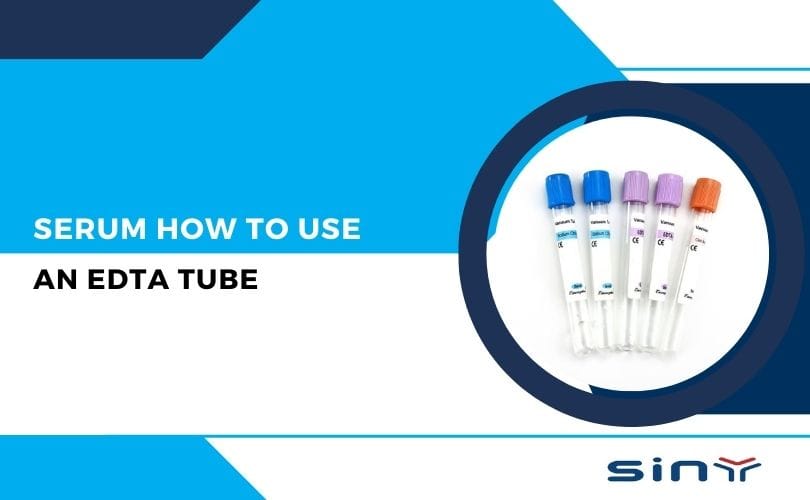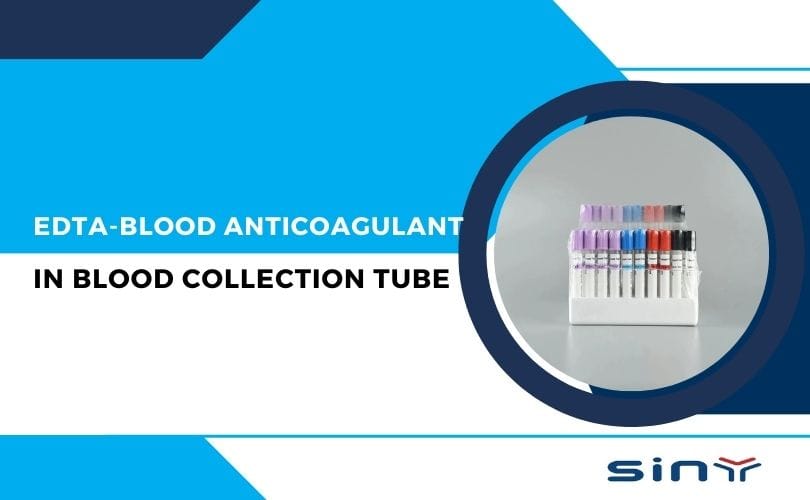In modern healthcare and diagnostics, precision is everything. From routine blood tests to advanced research studies, the accuracy of laboratory results depends heavily on the type of collection tube used. Among the most widely used are Serum Separator Tubes (SST) and EDTA Tubes.
But here’s the catch—while both are essential, they’re not interchangeable. The chemical additives, separation mechanisms, and applications of these tubes vary widely. A wrong choice could easily compromise a test, delay a diagnosis, or even lead to incorrect treatment.
In this article, we’ll take a deep dive into Serum Separator Tubes vs EDTA Tubes, exploring:
What each tube is designed for
Their properties, benefits, and limitations
When to use SST vs EDTA
A detailed comparison table
Common misconceptions
Expert tips for lab use
By the end, you’ll understand why using the right tube is more than just procedure—it’s critical for patient care and diagnostic accuracy.
What Are Serum Separator Tubes (SST)?
Serum Separator Tubes, also known as gold-top or tiger-top tubes, are primarily designed to separate serum from whole blood. These tubes contain a clot activator and a gel separator, which ensures that after centrifugation, the serum is neatly divided from the blood cells.
Key Features of Serum Separator Tubes:
Additive: Clot activator (silica particles) and separation gel
Cap Color: Often gold or red/gray tiger stripes
Purpose: Used to collect serum for clinical chemistry and immunology tests
Mechanism: After centrifugation, the gel barrier forms between clot and serum, allowing easy separation
Applications of SST:
Hormone testing (e.g., thyroid, cortisol)
Chemistry panels (e.g., liver, kidney, lipid profiles)
Serological testing (antibodies, antigens)
Electrolytes, enzymes, and proteins
Because serum lacks fibrinogen (a clotting protein), it’s often preferred in many laboratory tests that require clear samples without clotting factors.
For more insights into blood collection tube variations, check out EDTA Tubes vs Serum Tubes.
What Are EDTA Tubes?
EDTA Tubes, commonly recognized by their purple or lavender caps, are among the most essential tubes in hematology. They contain Ethylenediaminetetraacetic acid (EDTA), a strong anticoagulant that prevents blood from clotting by binding calcium ions.
Key Features of EDTA Tubes:
Additive: EDTA (K2 or K3 variants)
Cap Color: Purple or lavender
Purpose: Used for whole blood collection where plasma or intact cells are needed
Mechanism: Prevents clotting by chelating calcium ions, thus preserving blood morphology
Applications of EDTA Tubes:
Complete blood count (CBC)
Blood smears and morphology studies
Hemoglobin A1c testing (diabetes monitoring)
Molecular diagnostics (DNA, RNA studies)
Blood typing and crossmatching
Want to dig deeper into how EDTA works? Explore this guide on How Does EDTA Work.
If you’re interested in EDTA tubes for lab use, check out this EDTA Tubes for Blood Collection product page.
Serum Separator Tubes vs EDTA Tubes: Key Differences
Now that we’ve defined both tubes, let’s compare them side by side.
| Feature | Serum Separator Tubes (SST) | EDTA Tubes |
|---|---|---|
| Additive | Clot activator + gel separator | EDTA (anticoagulant) |
| Cap Color | Gold / Tiger-top | Purple / Lavender |
| Sample Type | Serum | Whole blood or plasma |
| Clotting | Allows clotting | Prevents clotting |
| Best For | Chemistry, immunology, serology | Hematology, molecular biology |
| Centrifugation | Required for separation | Plasma separation optional |
| Examples of Tests | Lipid profile, hormones, liver enzymes | CBC, HbA1c, DNA/RNA studies |
| Stability | Serum stable for many analytes | Preserves cell morphology |
This comparison shows why choosing between Serum Separator Tubes vs EDTA Tubes depends entirely on the test required. Using the wrong tube can lead to misleading results—for instance, using EDTA for calcium testing would produce inaccurate values since EDTA binds calcium.
Learn more about Purple Top vs Other Tubes here.
Why Choosing the Right Tube is Crucial
Laboratories operate on accuracy. Imagine ordering a serum-based test, but the blood is collected in an EDTA tube. The result? A compromised sample, invalid results, and possibly a repeat collection that causes unnecessary stress to the patient.
Some examples:
Calcium or potassium tests: EDTA falsely lowers calcium and increases potassium levels.
Coagulation studies: Require citrate, not EDTA or SST.
DNA extraction: EDTA tubes are essential because they preserve nucleic acids.
This highlights why laboratory staff and healthcare workers must be well-trained in tube selection.
Applications: When to Use SST vs EDTA
Use Serum Separator Tubes when:
Chemistry panels are ordered
Hormone and enzyme analysis is required
Antibody or antigen detection is needed
Use EDTA Tubes when:
A complete blood count (CBC) is ordered
Molecular studies (DNA/RNA) are performed
Blood banking and crossmatching are necessary
For additional guidance, explore What are Purple Cap Blood Collection Tubes.
Advantages and Disadvantages
Serum Separator Tubes (SST):
Advantages: Stable serum, easy separation, ideal for chemistry tests
Disadvantages: Cannot be used for hematology or molecular studies
EDTA Tubes:
Advantages: Preserves cellular morphology, prevents clotting, critical for hematology
Disadvantages: Can interfere with chemistry analytes, unsuitable for serology
Misconceptions About SST vs EDTA
“All blood tests can use the same tube.”
False—each test requires specific conditions.“EDTA is better because it prevents clotting.”
Not always—many tests actually require clotting, hence SST is used.“Serum and plasma are interchangeable.”
Incorrect—serum lacks clotting factors, while plasma retains them.
For a detailed discussion, visit What Are EDTA Tubes Containing Separator Gel.
Industry Insights and Manufacturing
Trusted medical suppliers like Siny Medical and EDTA Tube provide high-quality blood collection tubes. You can even explore more from their YouTube channel Siny Medical on YouTube or browse products at Made-in-China Siny Medical.
For professional-grade EDTA tubes, check EDTA Tube’s About Us and Contact Us for more info.
FAQs
1. Can I use EDTA tubes instead of SST for chemistry tests?
No. EDTA interferes with many analytes like calcium and potassium. Always use SST for chemistry.
2. Why do EDTA tubes have purple caps?
The color coding standard helps technicians quickly identify anticoagulant tubes for hematology.
3. Do SST tubes need centrifugation?
Yes. Centrifugation helps form the gel barrier that separates serum from clot.
4. Can EDTA tubes be used for molecular biology?
Yes, they are excellent for DNA and RNA preservation.
5. Which tube is best for serological tests?
Serum Separator Tubes are preferred for antibody/antigen testing.
Wrapping It Up: Key Takeaways
When it comes to Serum Separator Tubes vs EDTA Tubes, the difference lies in their additives, applications, and accuracy impact.
SST (Gold/Tiger-top): Best for serum-based tests like chemistry and immunology.
EDTA (Purple-top): Essential for hematology, molecular studies, and blood banking.
Using the correct tube ensures not just reliable lab results, but also accurate diagnoses and better patient care.
If you’re sourcing professional-grade tubes, check out the full range of EDTA Tubes for Blood Collection available for labs and hospitals.






